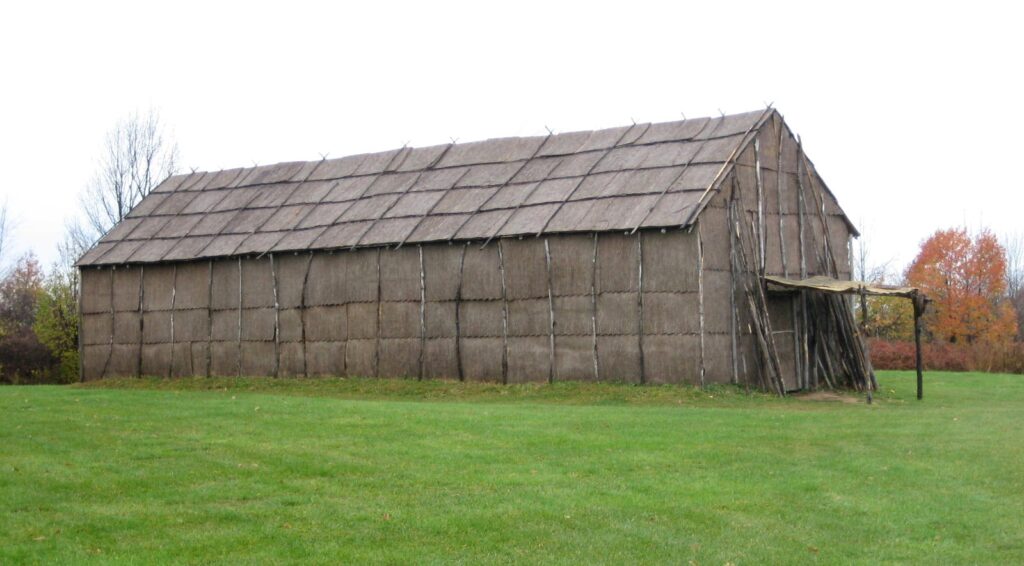The Haudenosaunee
At the Cumming Nature Center, you are standing on the unceded land of the Onödowá’ga (Seneca) people of the Haudenosaunee (Iroquois) Confederacy. The Bristol Hills are sacred to the Seneca as the place of origin of their culture. The history represented by Frost Town is what historians and anthropologists refer to as settler colonialism, as the members of Frost Town’s community settled in the area after the Seneca were forcibly removed from their lands.

Today, we can learn about and celebrate the culture of the Seneca at places like the Onöhsagwë:de’ Cultural Center at the Seneca Iroquois National Museum in Salamanca, and the Seneca Art & Culture Center at the Ganondagan State Historic Site in Victor. Every November, members of the Haudenosaunee Confederacy hold the Canandaigua Treaty Day Celebration to commemorate the continued observance of the 1794 treaty’s establishment of friendship between the Six Nations and the United States, despite significant aspects of the treaty, including land rights, having been ignored by the United States government.


Land Acknowledgement
The Rochester Museum & Science Center and Cumming Nature Center acknowledges that they were founded upon exclusions and erasures of many indigenous peoples, including the Onödowá’ga (Seneca) Nation of the Haudenosaunee (Iroquois) Confederacy on whose land this institution is located. This acknowledgement demonstrates a commitment to beginning the process of working to dismantle the unjust legacies of colonialism and honoring the ecological knowledge of the indigenous peoples of the land.
The SUNY Brockport Department of Anthropology acknowledges with respect the Indigenous Peoples on whose lands SUNY Brockport now stands, the Onödowá’ga (Seneca) Nation of the Haudenosaunee (Iroquois) Confederacy. As an academic community, we are dedicated to recognizing and promoting Indigenous Peoples’ rights in our teaching and scholarship. We support the inclusion of Indigenous students, staff and faculty on our campus.
For more information on Haudenosaunee and Onödowá’ga (Seneca) life, visit the Seneca Art & Culture Center at the Ganondagan State Historic Site or Onöhsagwë:de’ Cultural Center at the Seneca Iroqouis National Museum websites.


Next Section: Frost Town’s Beginnings
